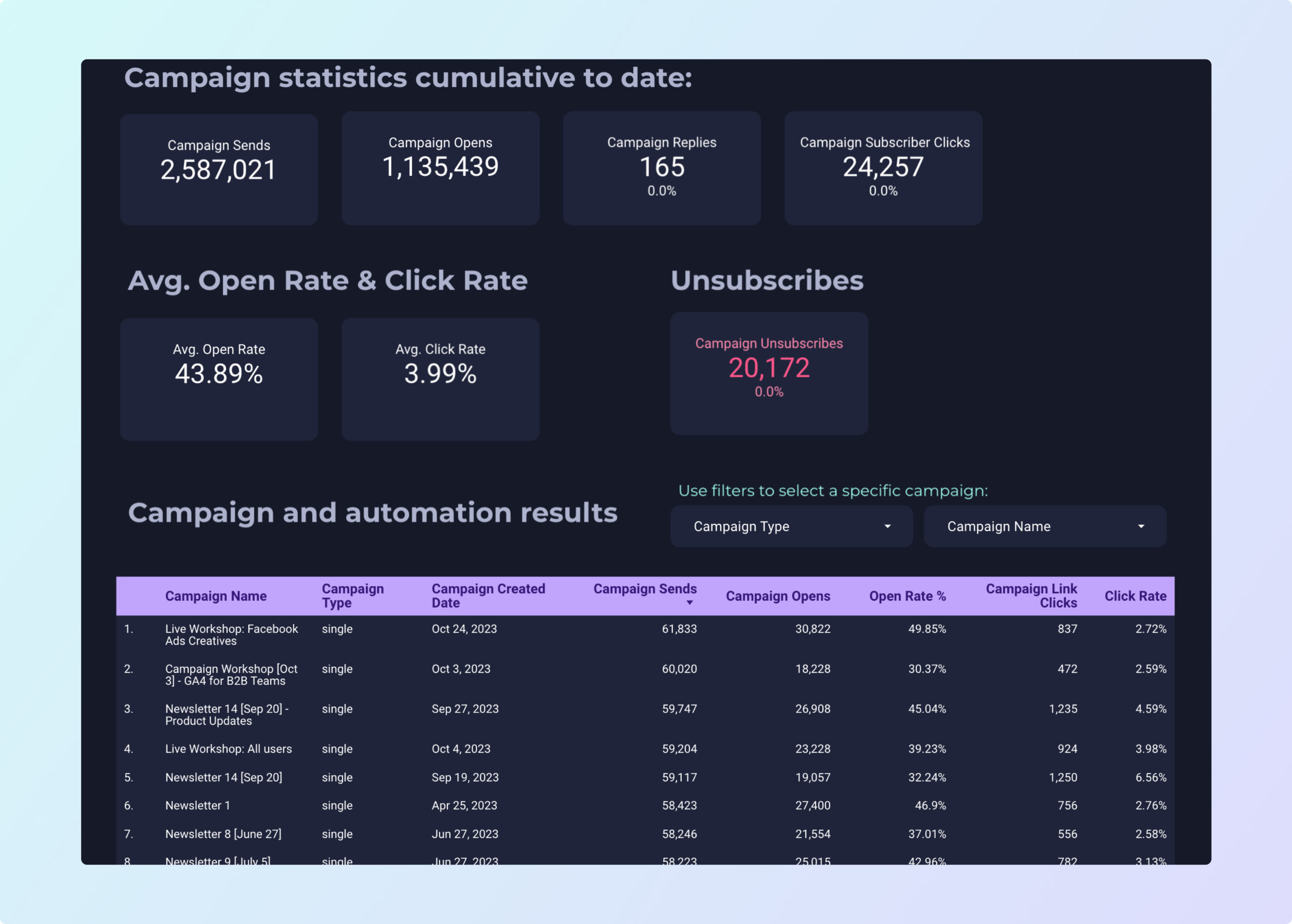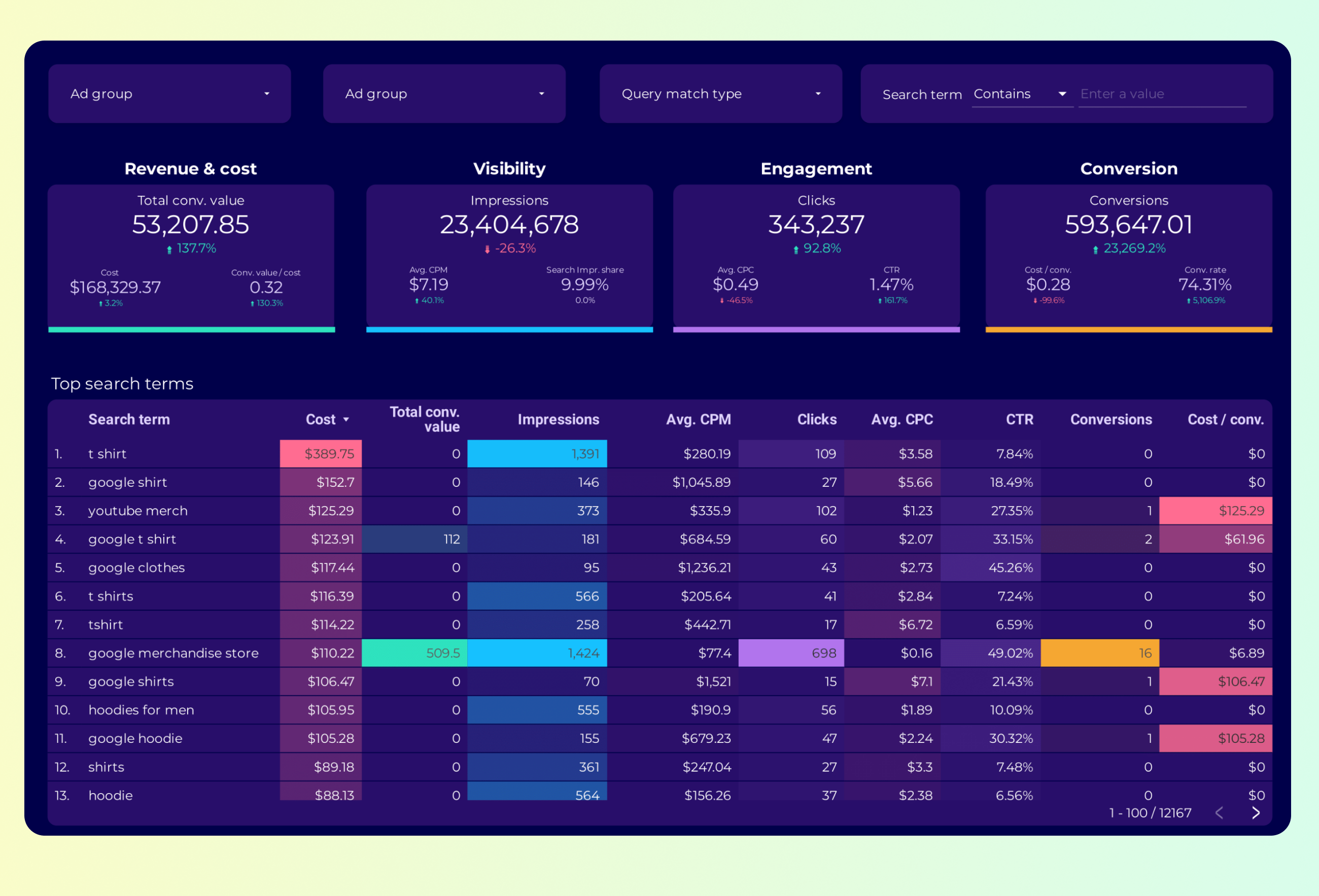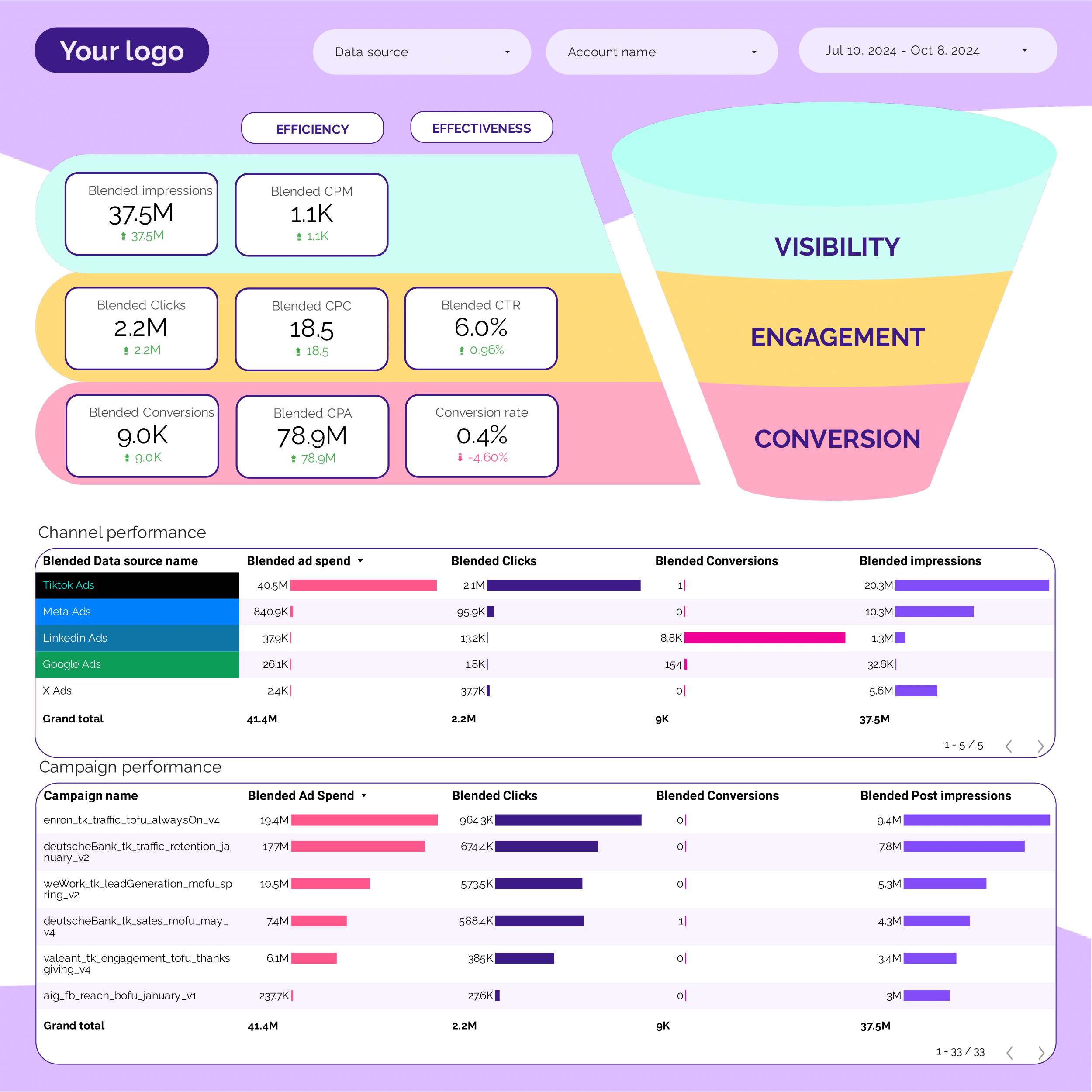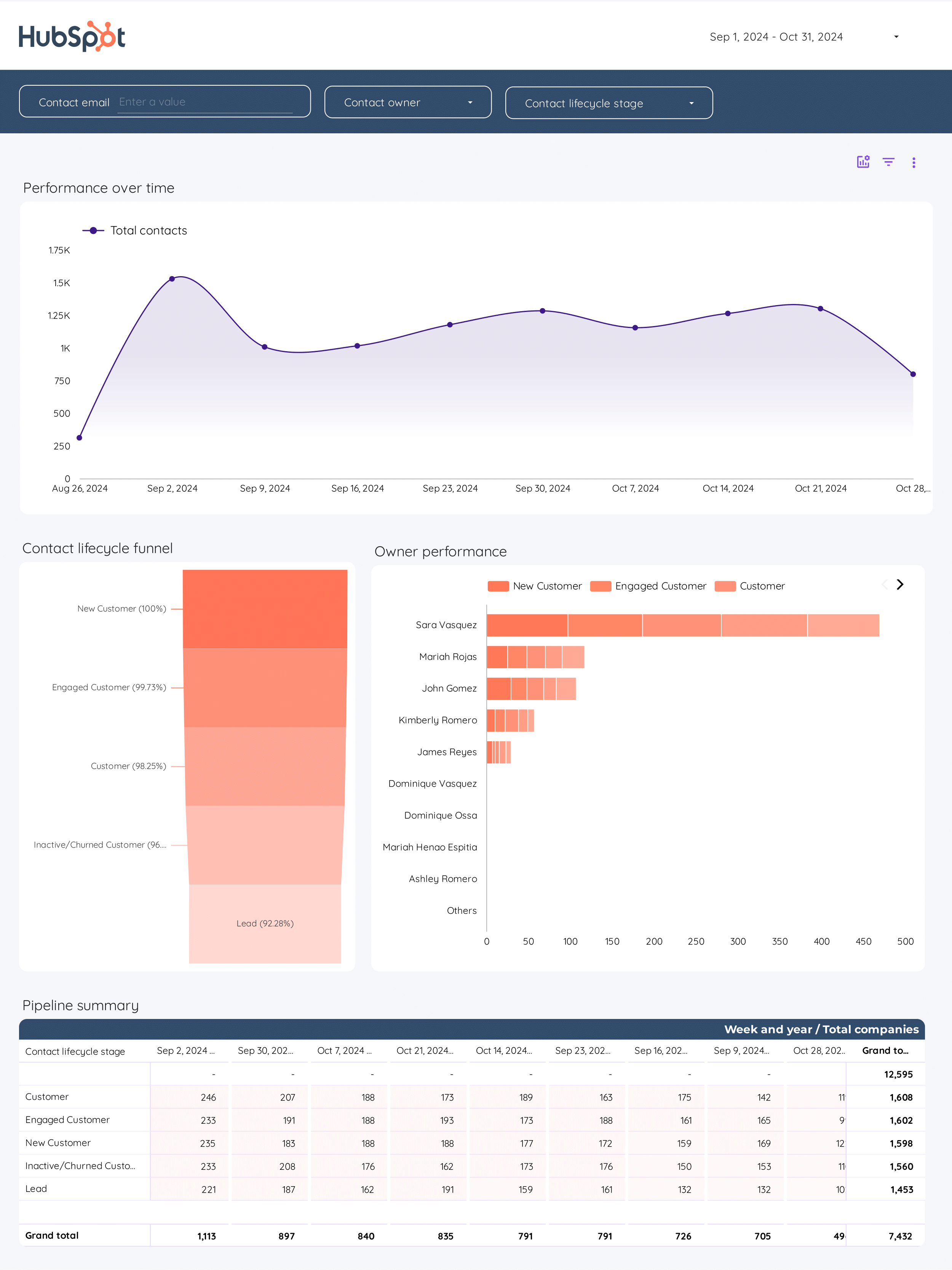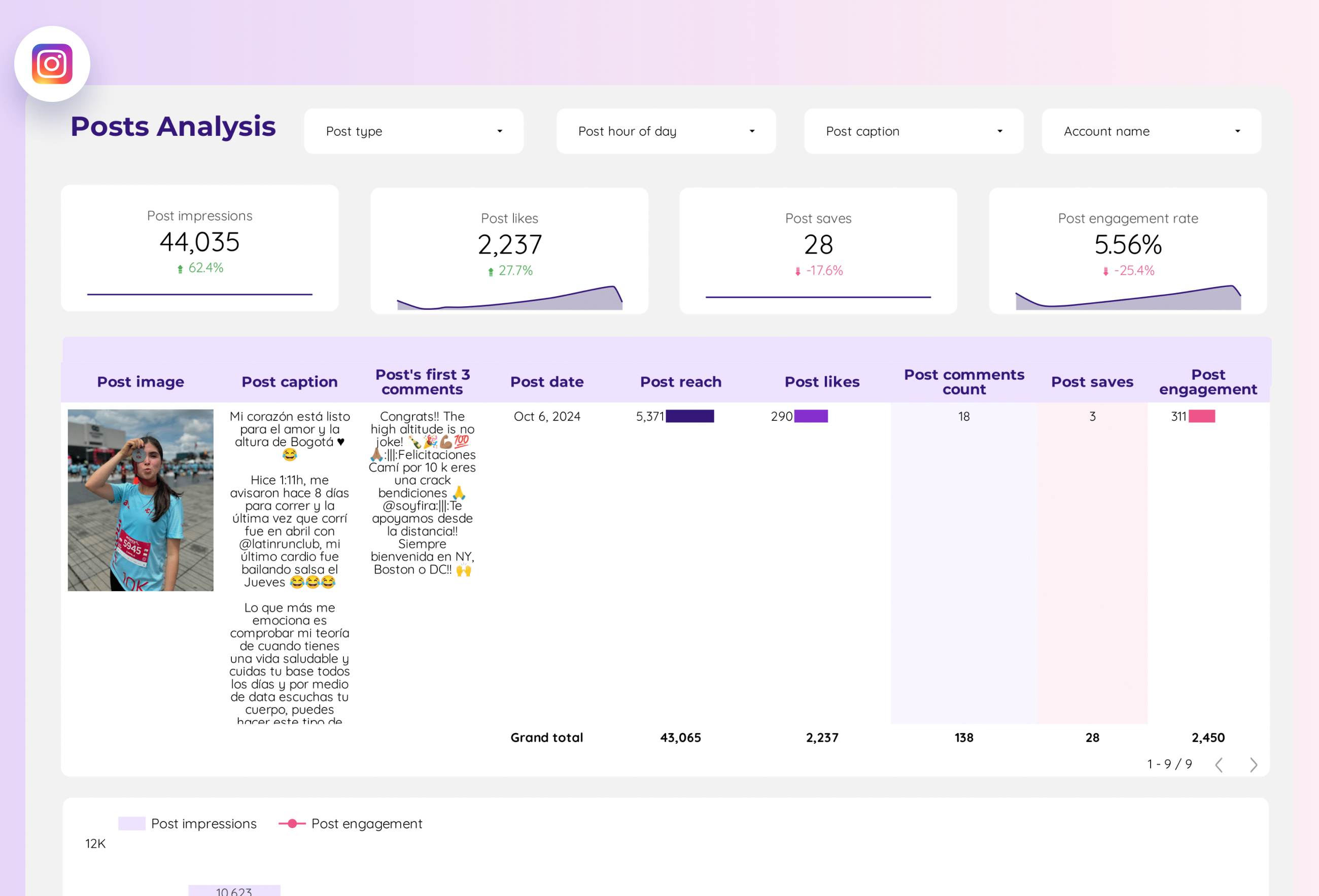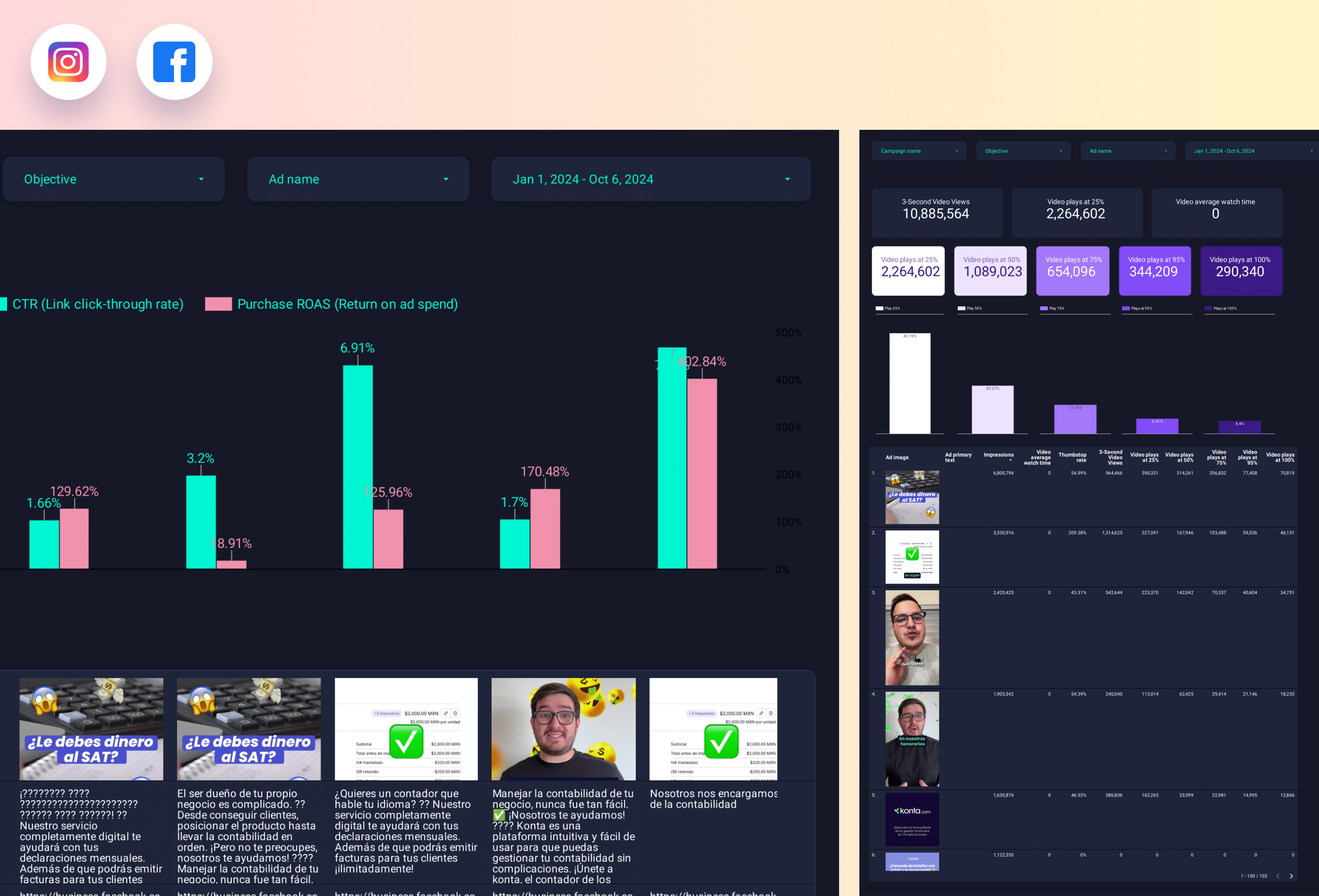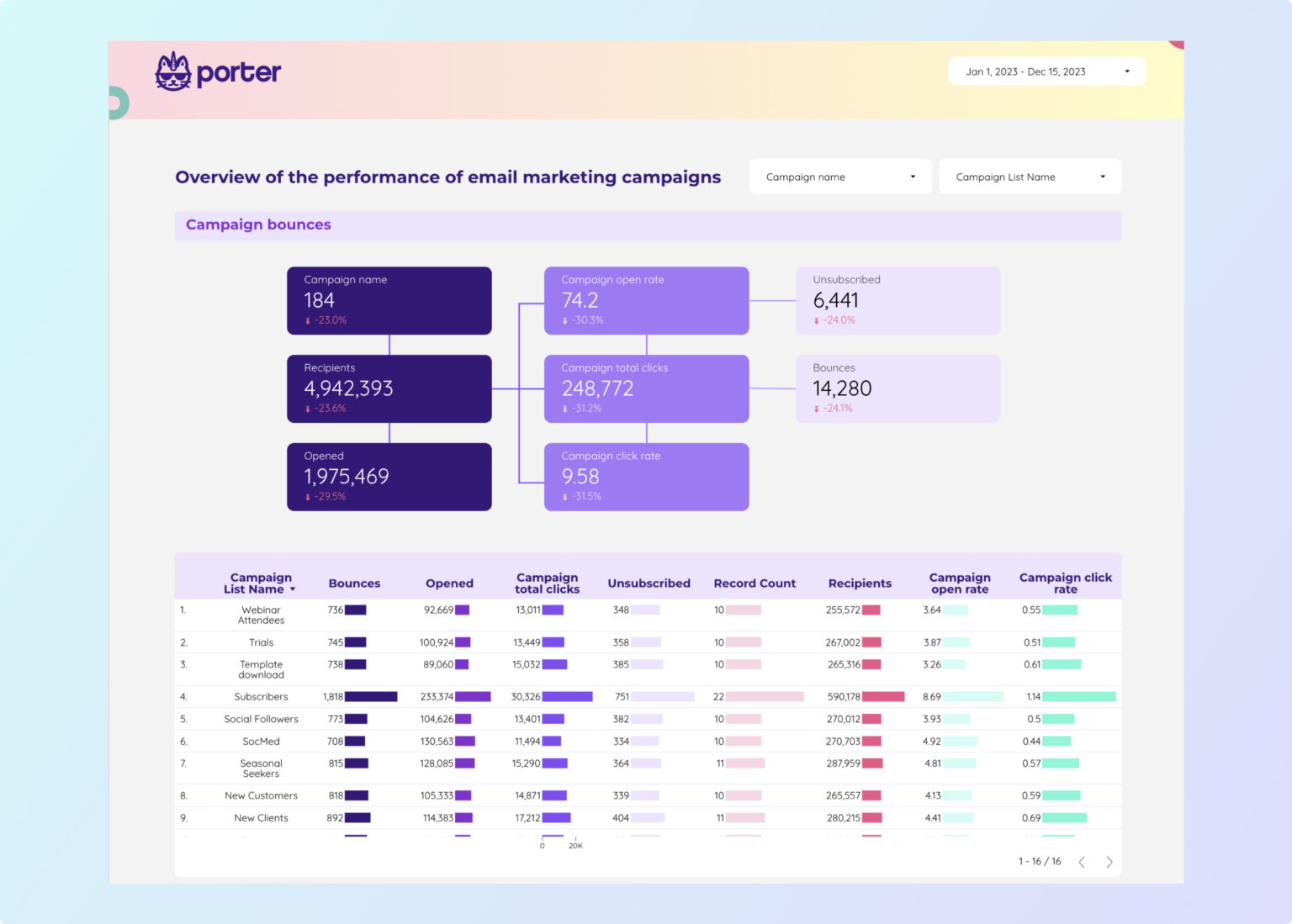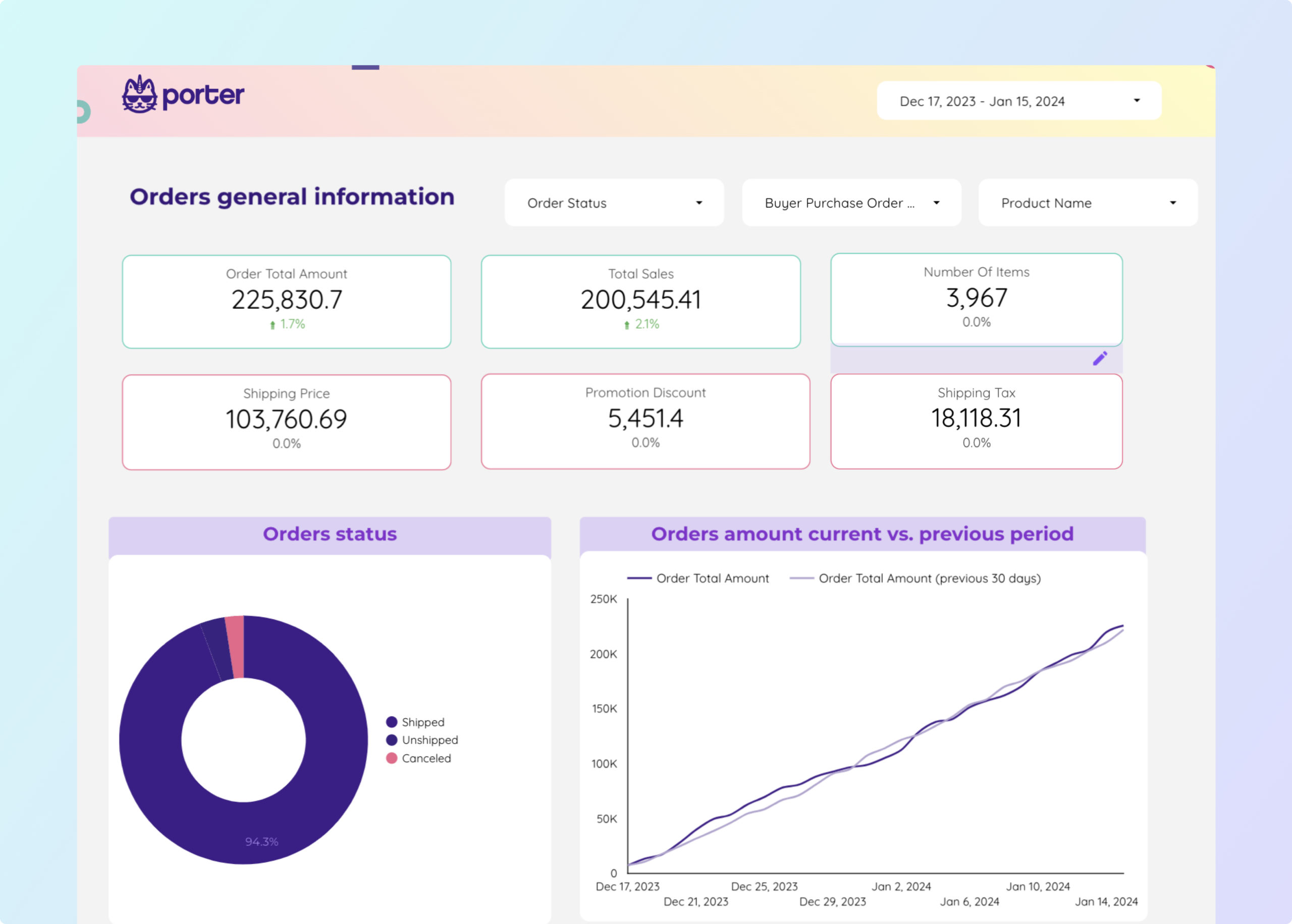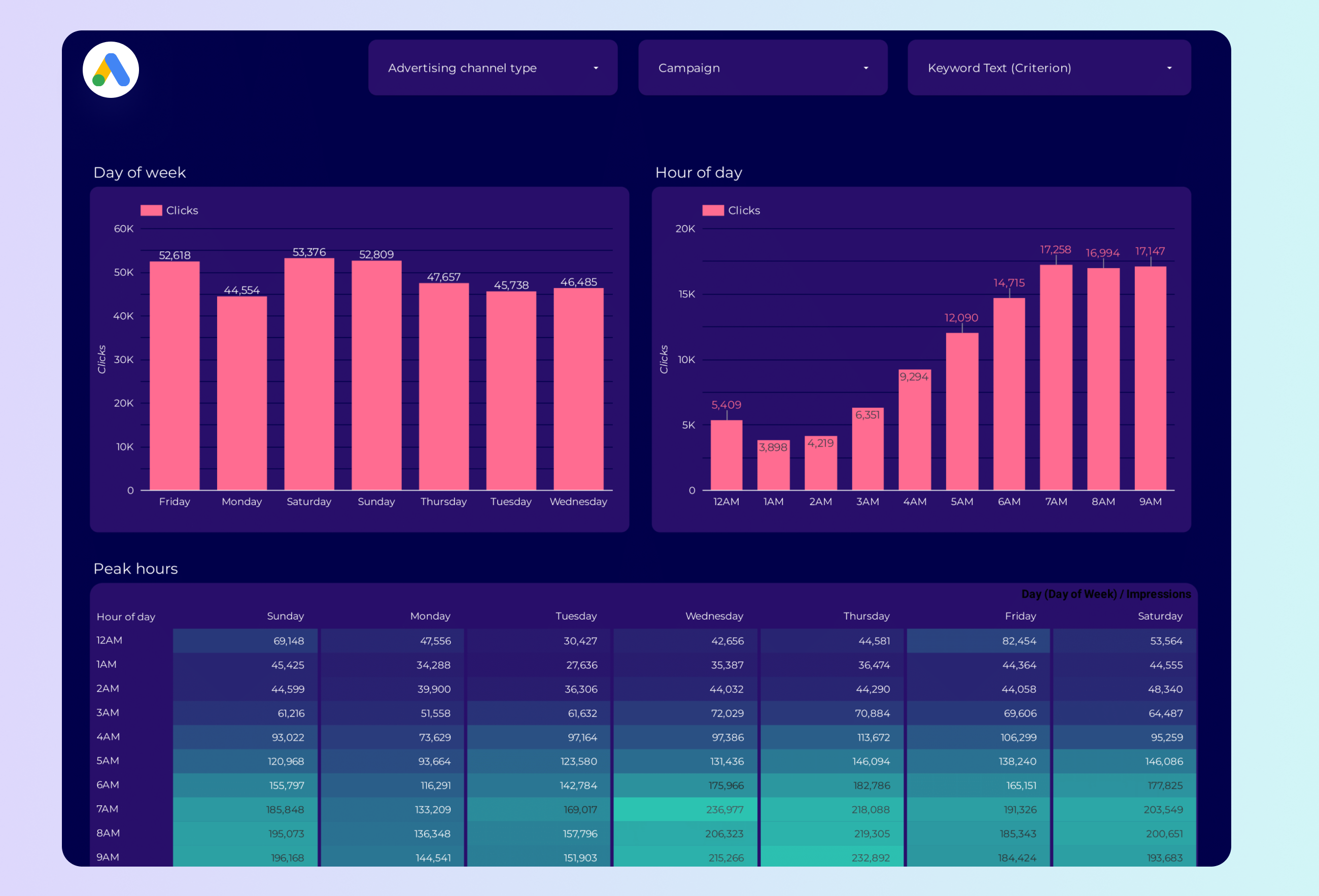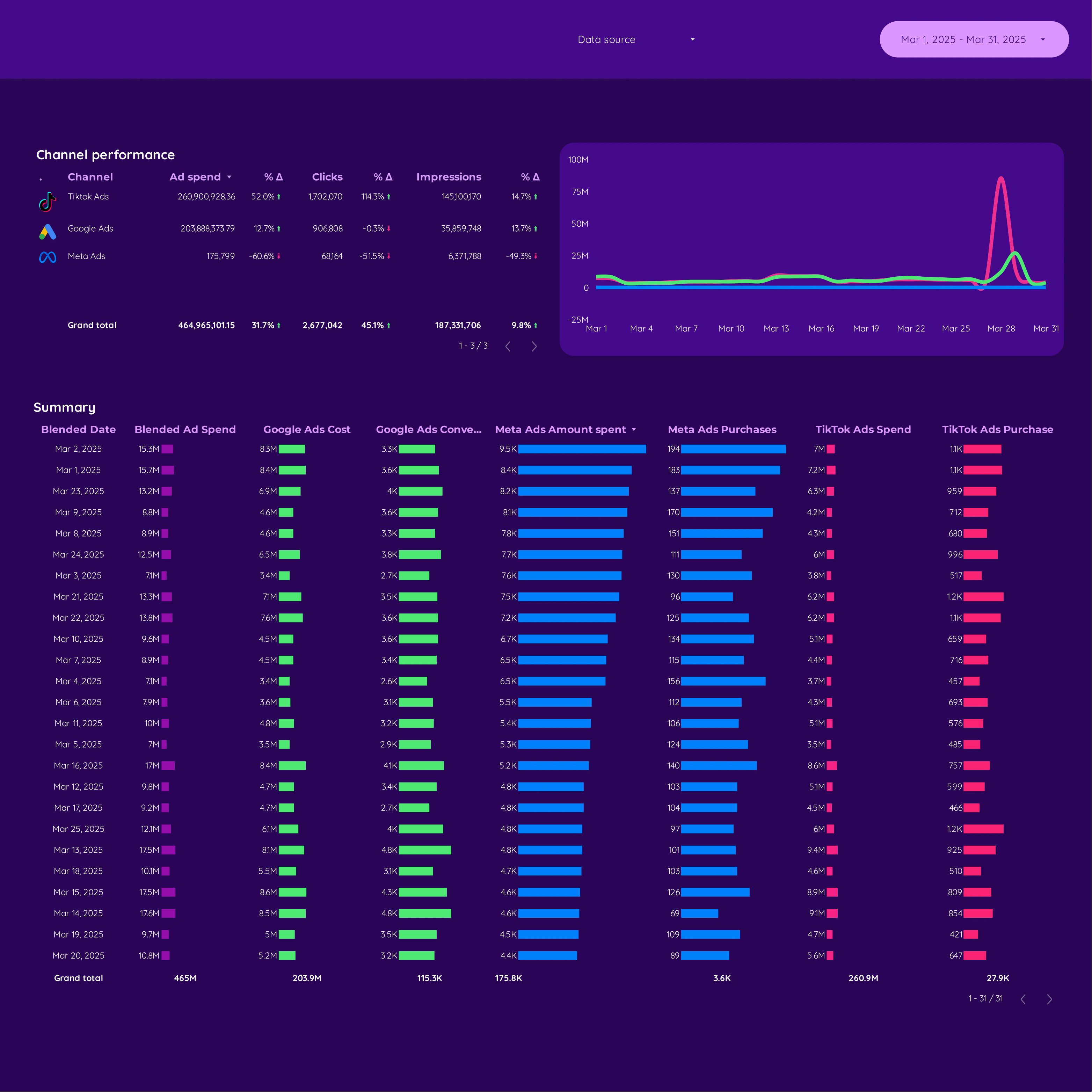What is a Daily dashboard?
A Daily dashboard is an interface tool that consolidates data from multiple sources (e.g., internal databases, CRM systems, project management tools) to track and display key performance indicators (KPIs) (e.g., task completion rate, daily sales, customer interactions), enabling teams to monitor daily operations and performance effectively.
Daily dashboards are typically built using flexible tools like Google Looker Studio, Power BI, Google Sheets, or platform-specific solutions to enable high customization and integration of multiple data sources.
What to include in a Daily dashboard?
An actionable Daily dashboard balances context and specificity based on the audience (executives, managers, and analysts) and their use cases.
Executive Daily dashboards
Executive dashboards for CEOs and department heads show the overall impact of daily operations. Reviewed daily or weekly, they include:
- Operational efficiency analysis: by department, using key metrics for large-scale operations.
- Resource allocation analysis: utilization rates, productivity metrics, and cost efficiency.
- Trend analysis: daily performance trends and anomalies.
- Add text for additional context to translate metrics for non-technical audiences. Present in slide decks and simplified Looker Studio reports.
Manager Daily dashboards
Manager dashboards have cross-department views with drill-downs to see performance by team, project, region, and task. They help align teams, define tactics, and include:
- Cross-department reporting: overall performance, project status, or region reporting across departments.
- Goal tracking: compare current performance vs objectives.
- Audits for prioritization and spotting issues.
- Resource analysis for task and workload mapping.
- Task, project, and team performance analysis
Operational Daily Dashboards
Operational dashboards for analysts and team leaders have granular, customizable KPIs to solve technical issues. Monitored hourly, daily, or weekly, they cover:
- Task management: task completion rates, deadlines, and bottlenecks.
- Customer interactions: response times, satisfaction scores, and feedback.
- Sales: daily sales figures, conversion rates.
- Inventory: stock levels, turnover rates, and order fulfillment.
Operational Daily dashboards are highly customized, built in flexible tools like Google Sheets or Looker Studio to enable data cleaning, blending, annotations, and integrating multiple sources.
How to build a Daily dashboard?
To build a Daily dashboard, connect your data sources, choose a template on Looker Studio or Sheets, build your queries by selecting metrics and dimensions, choose charts to visualize your data, customize the dashboard, design and share via link, PDF or email.
Here’s the breakdown:
Connect data sources
Define and connect the data sources to bring to your dashboard. Common sources are CRM systems for customer data, project management tools for task tracking, and internal databases for sales and inventory data.
To connect your data sources, go to portermetrics.com, choose the data sources to bring to your dashboard.
You can follow these tutorials on connecting your data:
Choose a template
Choose from dozens of Daily dashboard templates in Google Sheets or Looker Studio, designed for use cases like task monitoring, resource allocation, and sales tracking.
Learn to copy Looker Studio templates.
While templates are the starting point, make them specific for your business or team. Map your specific metrics, especially custom KPIs, CRM contact data, and all the fields and metrics that you define as "key performance indicators" and "targets".
Depending on your reporting tool—Google Sheets or Google Looker Studio, pick any of the dozens of templates created by our team and customers to solve your Daily reporting use cases, such as task monitoring, resource allocation, and sales tracking.
Select metrics, dimensions, and charts
Once your dashboard template is downloaded, you may 1) modify it or 2) create a blank page to build it from scratch. Whatever the case, setting up a query always follows these steps:
- Select the data source and the account connected to it
- Choose metrics (e.g. Task completion, sales, customer interactions, etc.).
- Choose breakdowns to segment your data (e.g. by date, team, project, etc.)
You can follow these tutorials on adding data to your dashboards
Design
To make your Daily dashboards truly white-label you can add logos, colors, fonts, and styling to mirror your brand.
Follow these tutorials to design your Daily dashboards:
Share
Share your Daily dashboards via links, PDF, schedule emails, and control permissions.
KPIs to include in a Daily dashboard?
Daily dashboards should include a mix of operational, efficiency, effectiveness, and cost metrics and KPIs to fully understand the performance of daily operations towards business goals. They include:
Operational KPIs measure the daily processes, regardless of the department:
- Task metrics: task completion, deadlines met, backlog
- Customer metrics: interactions, satisfaction scores, feedback
- Sales metrics: daily sales, conversion rates, key transactions
Efficiency KPIs compare your outputs to the cost, including:
- Task: cost per task completed
- Customer: cost per interaction
- Sales: cost per sale
Effectiveness KPIs compare the input with the output from one stage to another
- Task: task efficiency rate
- Customer: interaction effectiveness
- Sales: sales effectiveness rate
Cost KPIs show the bottom-line impact of your daily performance:
- Cost: operational expenses, payroll
- Efficiency: ROI, cost savings
- Effectiveness: average order value, customer value
To analyze these KPIs, segment them by:
- Department: sales, customer service, operations
- Time: Hourly, daily, weekly
- Project: task type, objective
- Resource: tools, equipment, budget

